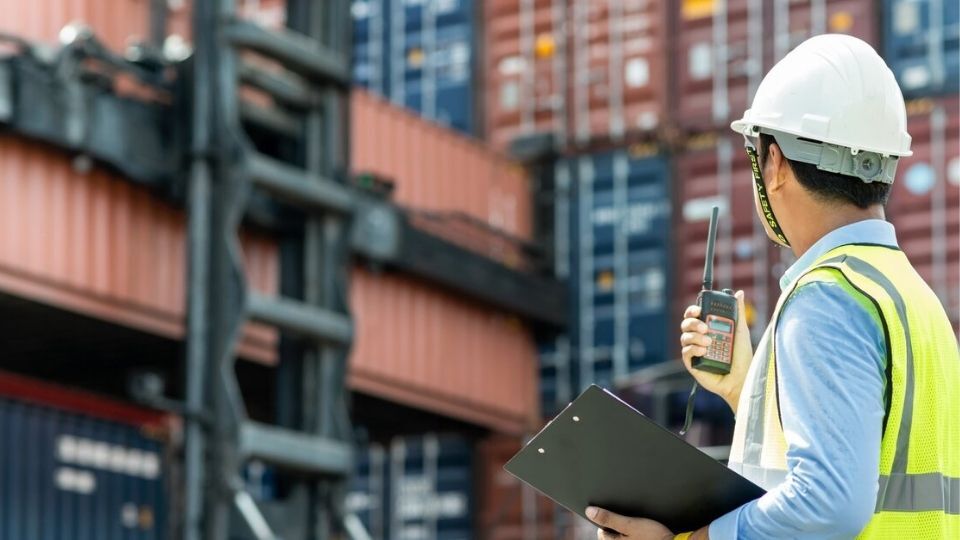Separating fact from fiction: Debunking five common police telematics myths
What concerns might be holding your police department back from adding a fleet solution? In this article, we’ll explore the five most common myths around police telematics and why each is a misconception.
By Geotab Team
May 12, 2025

Key Insights
- Learn five of the most frequently held police telematics myths and why they are false
- The benefits of law enforcement telematics include increased officer safety, better vehicle efficiency and cost savings
- Discover how Geotab’s integrated police solution helps drive smarter decision-making and long-term positive results
When implementing a fleet management solution, internal objections ranging from “Big Brother” concerns to cost uncertainties may arise within your police department. Whatever the objection is, it’s important to know that there are substantial potential benefits from implementing a fleet management solution. With telematics supporting your fleet operations, you can run a safer, more cost-efficient police fleet and deliver better service to your community.
In this article, we’ll address five of the most common police telematics myths. We’ll explain why these myths aren’t based on facts and the best ways to explain to your fellow officers how—and why—law enforcement fleet management is a net positive for themselves, the department and the community.
Myth #1: Our existing police vehicle GPS tracking is enough – we don't need more features
There is often a perception that GPS and telematics are the same thing—so there’s no need to upgrade to a law enforcement telematics solution: An existing GPS system is good enough. This is typically one of the most common police telematics myths departments must overcome when implementing a fleet management solution.
While it’s true that GPS data is the foundation of telematics, today’s police fleet management tools offer much more than GPS alone. A robust telematics solution like Geotab’s offers an unmatched depth of vehicle health and performance data, translated into insights and suggested actions.
For example, with predictive maintenance capabilities, uptime can be improved both by keeping up on regular repairs, and by addressing emerging issues before they lead to a vehicle going out of service. Maximizing uptime works to keep both officers and the public safer.
Real-time data can also help monitor vehicle utilization, allowing you to right-size your police fleet—either increasing allocations with the right types of vehicles or downsizing those assets that aren’t needed. This means having a fleet that reflects the true needs of the organization—and demonstrating with data that the department is using its budget responsibly.
Driver safety insights can keep officers and the public safe by taking proactive steps before a crash occurs. Real-time data about driver behavior can help supervisors identify officers who may need driver coaching to eliminate bad habits and be more effective on patrol. Data-rich insights are also a way to save public dollars by monitoring idling, creating detailed trip reports, and monitoring officer behavior in and out of their vehicles.
Studied together, this actionable data will lead to less downtime, less wasted resources and more time serving and protecting the public. And, yes, with GPS at a law enforcement fleet management solution’s core, you’ll know exactly where your vehicles and officers are at all times—but you’ll also know so much more.
Myth #2: Police telematics will harm officer morale
“Big Brother” has become shorthand for unjust, invasive surveillance. While it’s true that telematics does enable your fleet managers to track vehicle locations and officers’ driving behaviors, this data can be used to help protect both officers and the community, rather than strictly as a basis for punitive actions. Here are several examples of how:
- Promoting safer driving. In 2024, traffic-related fatalities involving police officers increased by 48%. Given this sobering reality, safe driving in today’s age becomes all the more critical for your officers. Real-time insights into how officers are driving throughout their shift can allow supervisors to positively coach their officers on safer driving practices, instead of to admonish them. From not wearing a seat belt to driving too fast, this approach to behavior change can help prevent collisions before they happen.
- Providing both transparency and/or exoneration. In today’s often fraught policing environment, officers are under increased scrutiny with every action they take. A law enforcement fleet management solution can provide the data to back up an officer’s accounts of where they were during a situation and how they were driving. It is an objective witness that is free from emotion or biases.
- Faster backup. If a situation escalates, officers need to know that they will have the backup they need. With accurate, precise GPS locational data, additional resources can be dispatched from the closest point and to the exact location they’re needed—speeding and helping to defuse a situation—and most importantly, helping to keep all officers and the public safer.
- Better incident reporting. Accurate reporting is critical to keeping officers safe and providing the transparency and accountability expected by the public. For example, Geotab’s Collision Reconstruction feature can provide critical data about the events leading up to, during and after an incident. This data can help inform revisions to or create new safety policies to avoid similar incidents in future. Major and minor collision detection capabilities also make it easy for you to quickly be notified whenever a safety incident occurs. If a collision happens, backup can be quickly dispatched, without the need for the officer involved to radio it in first. This is especially critical for severe collisions that require more immediate response. Officer safety is something you can’t put a price on. Help protect your personnel with real-time, actionable collision insights.
Myth #3: Installing police telematics means a costly and complex tech overhaul
Another enduring police telematics myth is that implementation is too costly and complex to make it worthwhile. There is a commonly held belief that vehicles and technicians will be tied up for weeks as the technology is installed. And, even worse, that they’ll simply be saddled with yet another platform that officers and administrative personnel will have to meticulously manage over time.
Perhaps that’s the case with some telematics solutions, but Geotab is committed to the seamless integration of all police technologies into a single wheelhouse. With Geotab, you get access to 24/7 technical support as well as help from certified installers to implement our solution with ease. Additionally, our platform can often pay for itself and more through cost-saving measures like guiding right-sizing initiatives, reducing fuel consumption, decreasing liability risks and optimizing vehicle maintenance.
Here are several examples of how Geotab customers have driven ROI with our solution:
- The State of Utah downsized its police fleet by 60 vehicles
- Peel Regional Police reduced vehicle idling from 250 hours to 50 hours a day
- Interstate Batteries experienced an estimated 10% reduction in maintenance costs
- Wanacar decreased their fuel costs by 20%
Plus, with our open platform, APIs and software development kit (SDK), departments can perform police technology integration with in-car systems such as:
- Gun racks
- Cabin temperature monitoring
- Emergency lights and sirens
Additionally, the Geotab solution can integrate with other back-office systems as well, including business intelligence tools through Geotab Data Connector, geographic information systems (GIS) and other third-party solutions. Non-powered assets, like signage or trailers, can also be tracked, so you have eyes on all of your departmental assets.
As a result of using telematics, operations are streamlined, and, with the elimination of either outdated manual systems or redundant databases, efficiency and safety are improved while costs are cut.
Myth #4: Investing in police telematics will create public scrutiny around budget use
In today’s budget-conscious environment, there is an underlying fear that any expenditure (no matter how beneficial it is to the department’s operations) will face public scrutiny and pushback—particularly for a technology that is not seemingly directly related to an officer on patrol. And while there may be some truth to the pushback, it is another police telematics myth that shouldn’t hinder implementation.
As we’ve discussed, telematics helps protect officers, and it does the same for the public by enhancing the overall quality of policing operations. By explaining the safety benefits of telematics for everyone in the community, it’s easy for citizens to get on board with the investment. Data-driven insights with telematics can help you boost public safety by allowing you to focus on areas with increased crime, while reducing risky driving in your fleet with driver behavior insights. Situational awareness is also enhanced using telematics, as police departments can precisely locate where an officer is in need with vehicle tracking. They’re provided with real-time vehicle data that can guide quick, precise decision-making when time is of the essence. These key capabilities help departments resolve scenarios faster, with less danger of escalation and greater safety for everyone involved.
Explaining the potential for ROI with police telematics through extended vehicle lifespans, smarter fuel management and decreased waste are other powerful ways to help change public perception. With a host of police technology integrations, departments have better visibility into officer activities and operational costs—meaning that public funds are being used in the best possible way. Law enforcement telematics is a means to not only keep the public safe and be more fiscally responsible, but also to build greater community trust.
Myth #5: Police telematics is just another complex and labor-intensive platform to learn
Any new technology requires some level of training. But another police telematics myth is that implementing a law enforcement telematics solution will require significant training and downtime.
Geotab’s platform is user-friendly, designed to serve the operation and not the other way around. Our platform’s AI-enabled analytics assistant, Geotab Ace, also makes it easy to find the fleet insights you need and take action faster. Use this secure generative AI tool to decipher complex information and easily identify the trends in your police fleet’s data. And, perhaps just as important, Geotab or one of its resellers will be with you at every step of the implementation process, providing support, advice and resources before, during and after acquisition. Our dedicated training experts are eager to help you get started, resulting in minimal downtime while you implement our solution. Additionally, we offer robust product education content through our Learning & Development team, so you can start driving ROI with our solution quicker. Geotab’s goal for your department is a smooth telematics procurement and deployment process and to provide all the support your fleet needs for years to come.
Overcome police telematics misconceptions with Geotab
With Geotab as your solution, the above misconceptions are just police telematics myths. These are the five realities that are possible with our platform:
Clear return on investment. Geotab provides real-time, actionable data that allows you to reduce liability risks by leveraging impartial data for exoneration. Additionally, you can maximize your budget by improving vehicle uptime with predictive maintenance and reduce operating costs through idling and driver behavior insights.
A safer department. Driver safety insights, increased agility and more detailed incident reporting can help keep your officers out of harm’s way and enhance their effectiveness.
Seamless integration with existing technologies. Gun racks, cabin temperature monitoring, emergency lights and sirens are just some of the police technology integrations capable with Geotab to improve efficiency and transparency.
Transparency and accountability. With impartial data, officers have a means to address any accusations of improper conduct—clearing their names and protecting the department’s reputation and resources. Instead of “Big Brother”—Geotab’s solution can serve as a data-driven, reputational security blanket.
Ease of use. Geotab’s solution is user friendly and designed for minimal training downtime or implementation disruptions. More importantly, Geotab will be a committed partner with your department throughout the entire implementation process and beyond for sustained success.
To learn more about Geotab’s police fleet management tools, sign up for a free consultation.
Subscribe to get industry tips and insights
Frequently Asked Questions
No. While telematics does help with reporting on officer driving behaviors—it is a crucial technology designed to increase officer safety by providing immediate feedback for driving, enabling faster backup and exonerating officers of wrongdoing with objective data.
Yes. Police fleet management tools make reporting on vehicle health, safety metrics, fuel management and sustainability easy by collecting data from each of your vehicles and presenting it via digital dashboards. You can schedule reports to automatically send to your police chief, fleet managers, deputies or other key stakeholders to keep everyone in your department on the same page and save time.
The Geotab Team write about company news.
Table of Contents
- Myth #1: Our existing police vehicle GPS tracking is enough – we don't need more features
- Myth #2: Police telematics will harm officer morale
- Myth #3: Installing police telematics means a costly and complex tech overhaul
- Myth #4: Investing in police telematics will create public scrutiny around budget use
- Myth #5: Police telematics is just another complex and labor-intensive platform to learn
- Overcome police telematics misconceptions with Geotab
Subscribe to get industry tips and insights
Related posts

Collision avoidance systems: How fleets prevent incidents and improve safety
December 23, 2025
5 minute read
.jpg)
.png)
AI dash cams vs. traditional: Which delivers better fleet safety?
December 8, 2025
5 minute read

The $4B Crisis: Video Intelligence as the Answer to Fleet Distraction
December 2, 2025
3 minute read

The True Cost of Cargo Theft: When Customer Trust is on the Line
November 24, 2025
2 minute read

Telematics device cost: Key factors that determine pricing
November 19, 2025
5 minute read